A Fault Diagnosis Method for Pumped Storage Unit Stator Based on Improved STFT-SVDD Hybrid Algorithm
Abstract
:1. Introduction
- Nonlinear Characteristics and Complex Operating Conditions Challenges: The full characteristics of the pump-turbine in pumped storage units exhibit strong nonlinearity, which exposes the unit to the risk of deteriorating control quality and control system failures during frequent startups and shutdowns, as well as under drastic changes in operating conditions. The dynamic behavior of the unit under different operating conditions is complex, and during transitions such as startups, load shedding, and pump power failures, the stability issues of large-fluctuation transient processes are prominent, adding to the difficulty of fault diagnosis [29].
- Difficulty in Identifying Early Fault Characteristics: In the early stages of faults such as inter-turn short circuits in the excitation windings of pumped storage motors, the fault characteristics are often inconspicuous and difficult to identify effectively. This can lead to delays in addressing the fault, potentially triggering more severe faults such as rotor grounding [30,31].
- Sensor and Actuator Failures: The speed control system of pumped storage units is impacted by the complex dynamic behavior across multiple operating conditions, resulting in frequent failures of actuators and sensors. This increases the difficulty and complexity of fault diagnosis, necessitating the development of more precise and efficient fault detection and identification models to achieve timely detection and accurate identification of unit faults [32].
- Innovative Application of a Hybrid Algorithm: We introduce a hybrid algorithm combining an improved STFT with SVDD for stator fault diagnosis in pumped storage generators. The novelty of this hybrid approach lies in integrating time-domain signal analysis with the SVDD method from machine learning to process and identify inter-turn short-circuit faults in stator windings. This combination not only enhances the accuracy of fault identification but also strengthens the algorithm’s applicability in complex electrical and magnetic state analysis.
- Integration of Fault Model with Signal Processing Techniques: We have established a fault model for inter-turn short-circuit in stator windings of pumped storage generators and innovatively combined it with two-phase current conversion technology and STFT spectral analysis. Initially, the three-phase current signals are converted to two-phase currents using the principle of equal magnetic potential, which simplifies signal processing complexity and emphasizes fault features. Subsequently, the converted two-phase current signals are transformed from the time domain to the frequency domain using STFT, further extracting fault characteristics. This fusion of the fault model with advanced signal processing techniques enables more precise and efficient identification of inter-turn short-circuit faults in stator windings, while reducing cross-entropy loss and improving diagnostic reliability.
2. Feature Extraction of Short-Circuit Faults in the Stator of Pumped Storage Hydroelectric Generators
2.1. Mathematical Model of Stator Short-Circuit Faults in Pumped Storage Hydroelectric Generators
2.2. Time-Domain Transformation of Short-Circuit Fault Signals Based on STFT
3. Fault Diagnosis Model Based on the Improved SVDD
3.1. Introduction to the Traditional SVDD Model
3.2. Improvement Mechanism of SVDD
4. Case Study and Discussion
4.1. Introduction to Test Information
4.2. Comparative Algorithm and Experimental Result Analysis
5. Conclusions
Author Contributions
Funding
Data Availability Statement
Conflicts of Interest
References
- Chazarra, M.; Pérez-Díaz, J.I.; García-González, J. Optimal Joint Energy and Secondary Regulation Reserve Hourly Scheduling of Variable Speed Pumped Storage Hydropower Plants. IEEE Trans. Power Syst. 2018, 33, 103–115. [Google Scholar] [CrossRef]
- Yang, L.; Li, H.; Zhang, H.; Wu, Q.; Cao, X. Stochastic-Distributionally Robust Frequency-Constrained Optimal Planning for an Isolated Microgrid. IEEE Trans. Sustain. Energy 2024, 1–15. [Google Scholar] [CrossRef]
- Yang, L.; Xu, Y.; Zhou, J.; Sun, H. Distributionally Robust Frequency Constrained Scheduling for an Integrated Electricity-Gas System. IEEE Trans. Smart Grid 2022, 13, 2730–2743. [Google Scholar] [CrossRef]
- Joseph, A.; Chelliah, T.R. A Review of Power Electronic Converters for Variable Speed Pumped Storage Plants: Configurations, Operational Challenges, and Future Scopes. IEEE J. Emerg. Sel. Top. Power Electron. 2018, 6, 103–119. [Google Scholar] [CrossRef]
- Kumada, A.; Nakamura, T.; Hidaka, K.; Tsuboi, Y.; Yoshimitsu, T. Potential distribution on the stress grading system of high-voltage rotating machines—I measuring system. IEEE Trans. Dielectr. Electr. Insul. 2015, 22, 3163–3169. [Google Scholar] [CrossRef]
- Kogan, V.; Nindra, B. Investigation of high voltage stator winding vibrations in full-scale slot model. In Proceedings of the Electrical Insulation Conference and Electrical Manufacturing and Coil Winding Conference, Rosemont, IL, USA, 25 September 1997; IEEE: New York, NY, USA, 1997; pp. 155–166. [Google Scholar]
- Zhang, Y.; Zhang, Q.; Hong, C.; Hou, Z.; Chen, J.; Di, H.; Zhang, Z.; Li, H.; Wu, M.; Lu, T.; et al. Treatment of wear and loosening at the end of the stator winding of the generator-motor in Tianhuangping Pumped Storage Power Station. Hydropower Pumped Storage 2017, 3, 17–20. [Google Scholar]
- Jia, Z.; Xia, Y.; Deng, Y.; Peng, X.; Guan, Z.; Wang, L. Dynamic analysis and detection of loosening of stator slot wedges in large generators. Proc. CSEE 2011, 31, 107–113. [Google Scholar]
- Shao, W.; Zhang, X.; Guo, Y. Research on eliminating insulation damage of generator stator bars. Electr. Power Equip. Manag. 2019, 2, 66–68. [Google Scholar]
- Zhao, Y.J.; Li, C.S.; Fu, W.L.; Yu, T.; Chen, H. A modified variational mode decomposition method based on envelope nesting and multi-criteria evaluation. J. Sound Vib. 2019, 468, 115099. [Google Scholar] [CrossRef]
- Shao, Y. Research on Data-Driven Fault Diagnosis Algorithm for Rolling Bearings. Master’s Thesis, Shandong University, Jinan, China, 2021. [Google Scholar]
- Chen, J. Research on Intelligent Fault Diagnosis Algorithm for Rotating Machinery Based on Deep Learning. Master’s Thesis, Beijing Jiaotong University, Beijing, China, 2021. [Google Scholar]
- Nayana, R.; Geethanjali, P. Analysis of statistical time-domain features effectiveness in identification of bearing faults from vibration signal. IEEE Sens. J. 2017, 17, 5618–5625. [Google Scholar] [CrossRef]
- Luo, M.; Li, C.S.; Zhang, X.; Li, R.; An, X. Compound feature selection and parameter optimization of ELM for fault diagnosis of rolling element bearings. ISA Trans. 2016, 65, 556–566. [Google Scholar] [CrossRef]
- Li, X.; Xu, Z.; Xiong, W.; Wang, Z.; Tan, J. A method for bearing fault diagnosis based on deep metric learning. J. Vib. Shock. 2020, 39, 25–31. [Google Scholar]
- Xiao, Q. Overview of Machinery Fault Diagnosis Methods Based on Machine Learning Theory. Mod. Manuf. Eng. 2021, 7, 148–161. [Google Scholar]
- Wu, C.; Jiang, P.; Feng, F.; Chen, T.; Chen, X. Fault diagnosis of gearbox based on one-dimensional convolutional neural network. J. Vib. Shock. 2018, 37, 51–56. [Google Scholar]
- Yuan, Y. Early Fault Diagnosis Strategy for Rolling Bearings Based on Deep Learning. Sci. Technol. Innov. 2022, 5, 181–184. [Google Scholar]
- Peng, C.; Li, F.; Jiang, J. Overview of Fault Diagnosis and Prediction Methods Based on Deep Learning. Mod. Electron. Tech. 2022, 45, 111–120. [Google Scholar]
- Hoang, D.T.; Kang, H.J. A survey on Deep Learning based bearing fault diagnosis. Neurocomputing 2019, 335, 327–335. [Google Scholar] [CrossRef]
- Peng, D.; Liu, Z.; Wang, H. A Novel Deeper One-Dimensional CNN With Residual Learning for Fault Diagnosis of Wheelset Bearings in High-Speed Trains. IEEE Access 2018, 7, 10278–10293. [Google Scholar] [CrossRef]
- Liu, H.; Zhou, J.Z.; Zheng, Y. Fault diagnosis of rolling bearings with recurrent neural network-based autoencoders. ISA Trans. 2018, 77, 167–178. [Google Scholar] [CrossRef]
- Pan, Y.; Mei, F.; Miao, H.; Zheng, J.; Zhu, K.; Sha, H. An Approach for HVCB Mechanical Fault Diagnosis Based on a Deep Belief Network and a Transfer Learning Strategy. J. Electr. Eng. Technol. 2019, 14, 407–419. [Google Scholar] [CrossRef]
- Qiao, J.; Yin, X.; Wang, Y.; Lu, Q.; Tan, L.; Zhu, L. A Rotor Ground Fault Protection Method Based on Injection Principle for Variable Speed Pumped Storage Generator-Motor. IEEE Trans. Power Deliv. 2023, 38, 1159–1168. [Google Scholar] [CrossRef]
- Joseph, A.; Chelliah, T.R.; Selvaraj, R.; Lee, K.-B. Fault Diagnosis and Fault-Tolerant Control of Megawatt Power Electronic Converter-Fed Large-Rated Asynchronous Hydrogenerator. IEEE J. Emerg. Sel. Top. Power Electron. 2019, 7, 2403–2416. [Google Scholar] [CrossRef]
- Qiao, J.; Yin, X.; Wang, Y.; Yin, X.; Lu, Q.; Zhu, L.; Zhang, Q. Faulty Phase Selection and Location Method of Rotor Ground Fault for Variable Speed Pumped Storage Generator-Motor. IEEE Trans. Power Deliv. 2023, 38, 4253–4262. [Google Scholar] [CrossRef]
- Joseph, A.; Desingu, K.; Semwal, R.R.; Chelliah, T.R.; Khare, D. Dynamic Performance of Pumping Mode of 250 MW Variable Speed Hydro-Generating Unit Subjected to Power and Control Circuit Faults. IEEE Trans. Energy Convers. 2018, 33, 430–441. [Google Scholar] [CrossRef]
- Sunal, C.E.; Dyo, V.; Velisavljevic, V. Review of Machine Learning Based Fault Detection for Centrifugal Pump Induction Motors. IEEE Access 2022, 10, 71344–71355. [Google Scholar] [CrossRef]
- Qi, P.; Li, Y.; Ma, M.; Wu, Y.; Lu, W. Research on the Vibration Characteristics of Pumped Storage Unit Stator Core Based on Fiber Optic Sensing. IEEE Trans. Energy Convers. 2023, 38, 2179–2190. [Google Scholar] [CrossRef]
- Rouabah, B.; Toubakh, H.; Djemai, M.; Ben-Brahim, L.; Ghandour, R. Fault Diagnosis Based Machine Learning and Fault Tolerant Control of Multicellular Converter Used in Photovoltaic Water Pumping System. IEEE Access 2023, 11, 39013–39023. [Google Scholar] [CrossRef]
- Qi, P.; Li, Y.; Ma, M.; Hao, P.; Yao, X.S. Interturn Short Circuit Detection of Pumped Storage Unit Based on Optical Fiber Weak Magnetic Sensing. IEEE Trans. Power Electron. 2024, 39, 8732–8743. [Google Scholar] [CrossRef]
- Zhang, Y.; Liu, T.; Yuan, K.; Lv, T. High Reliable Lead Wire System of the Rotor Winding in Pumped Storage Power Stations. IEEE Access 2023, 11, 82390–82399. [Google Scholar] [CrossRef]



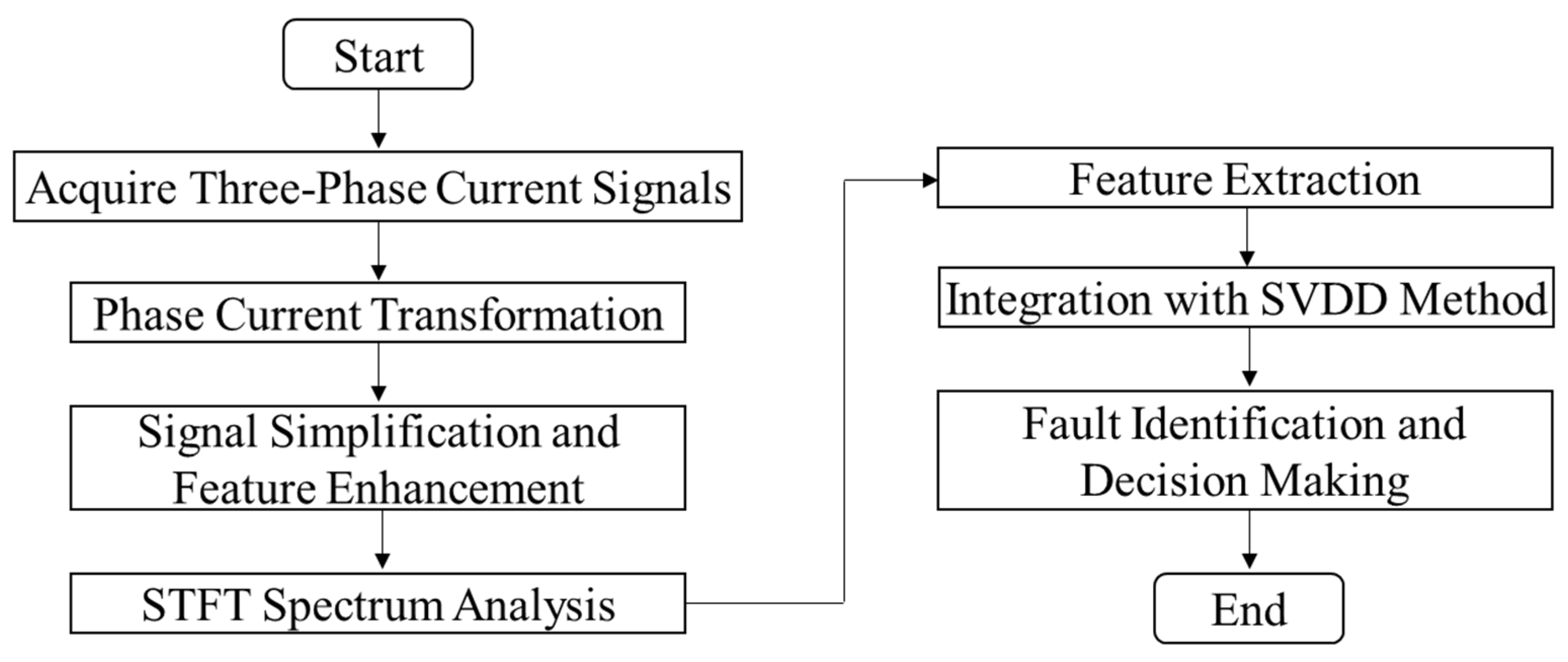
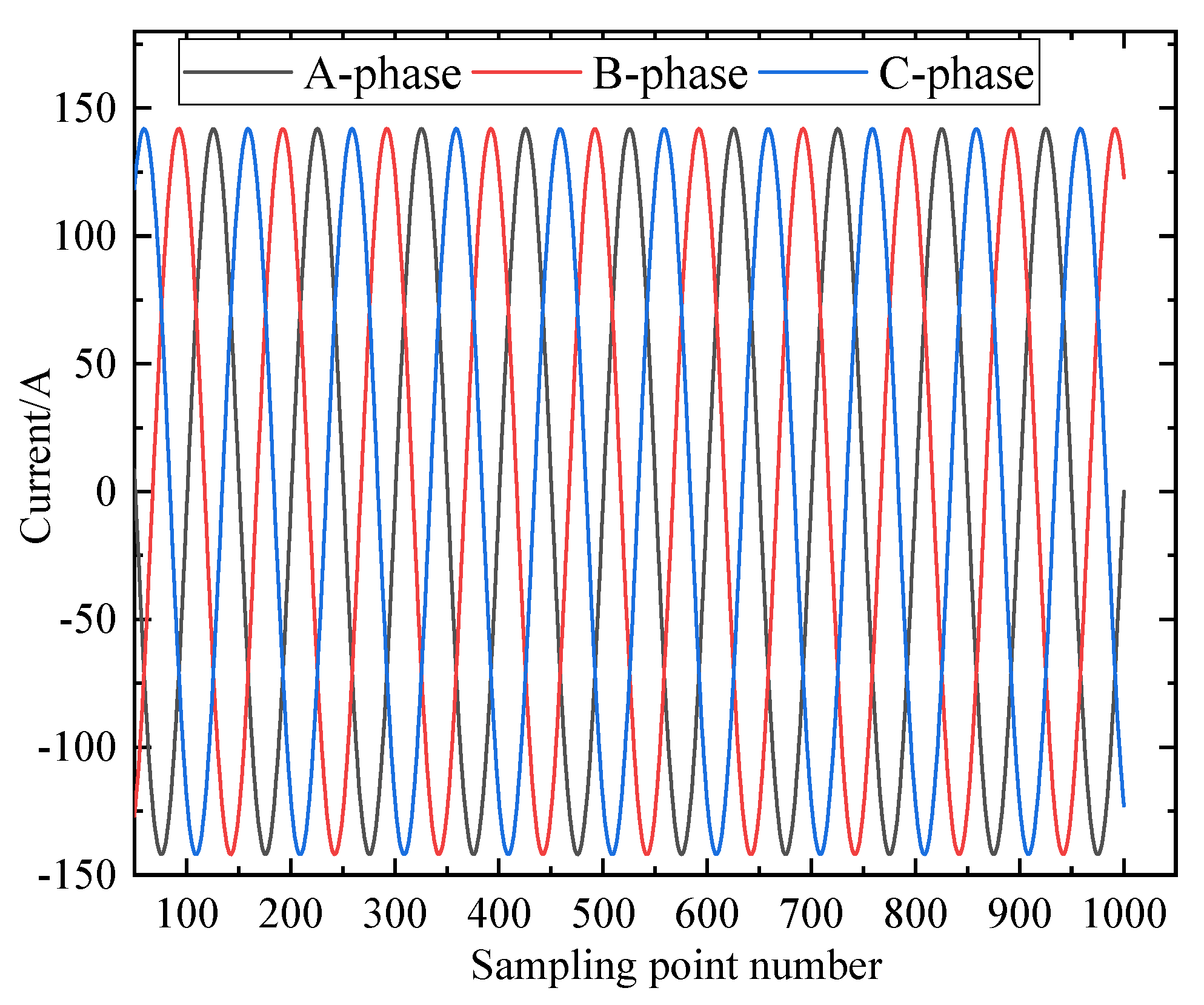
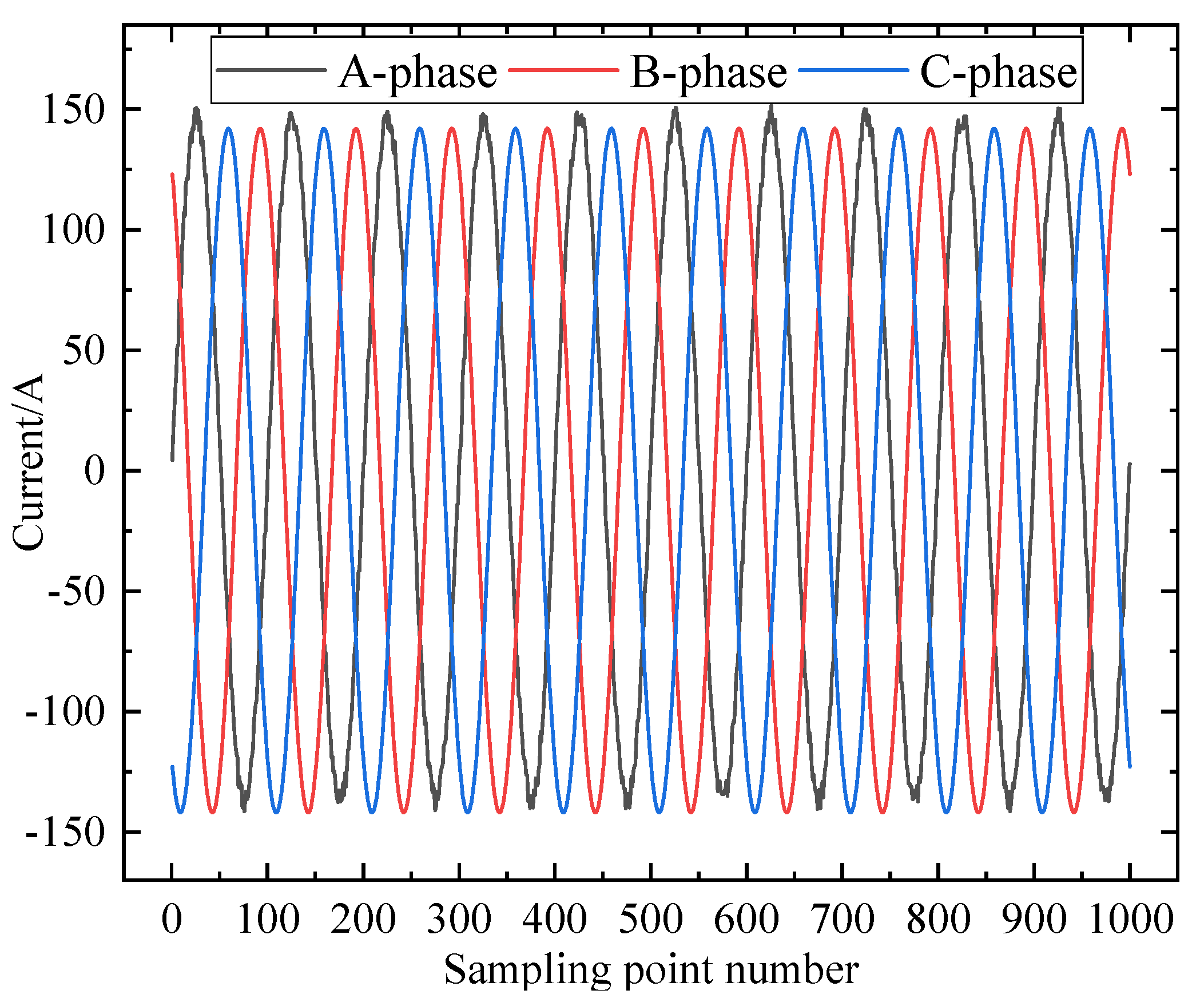
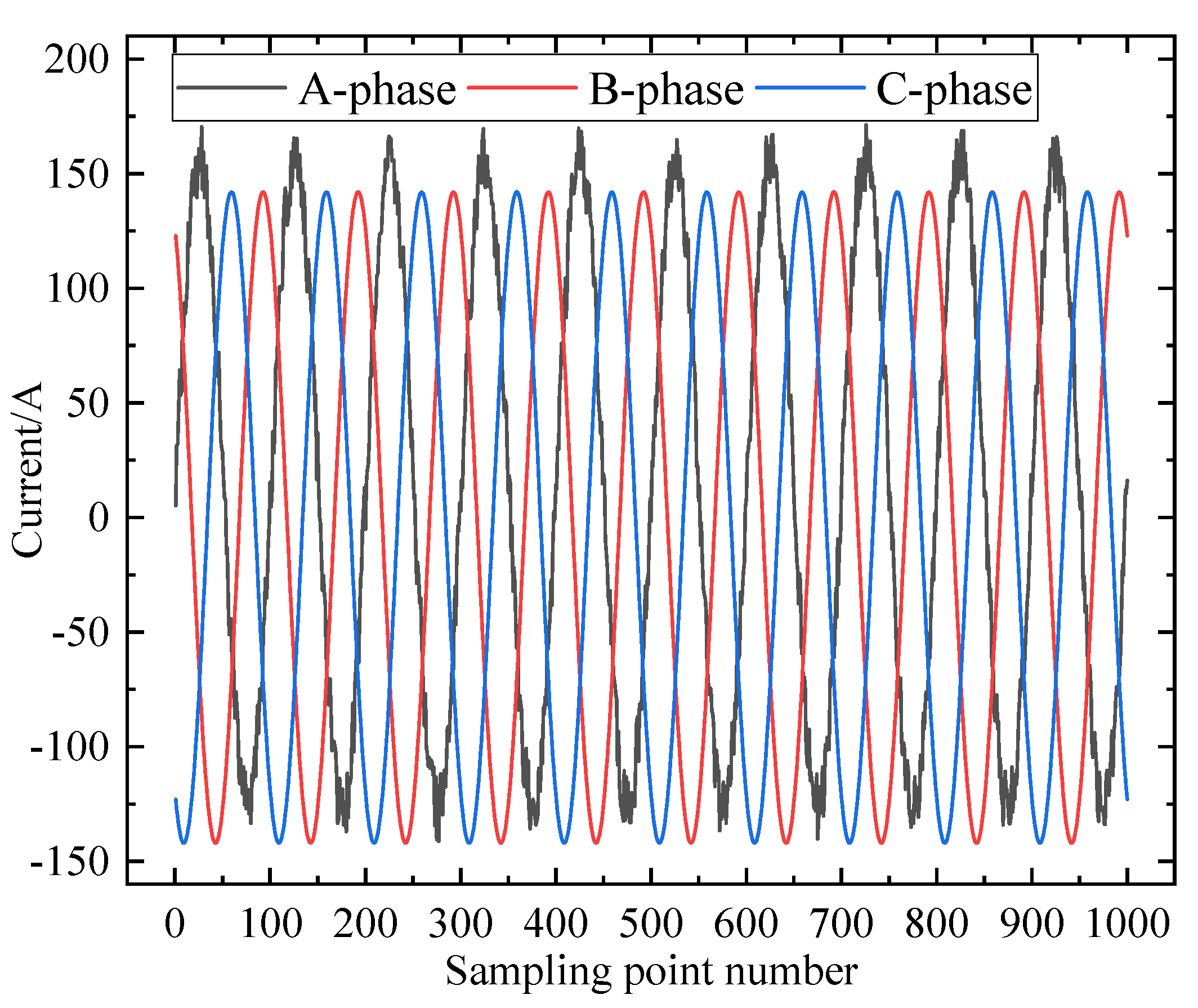

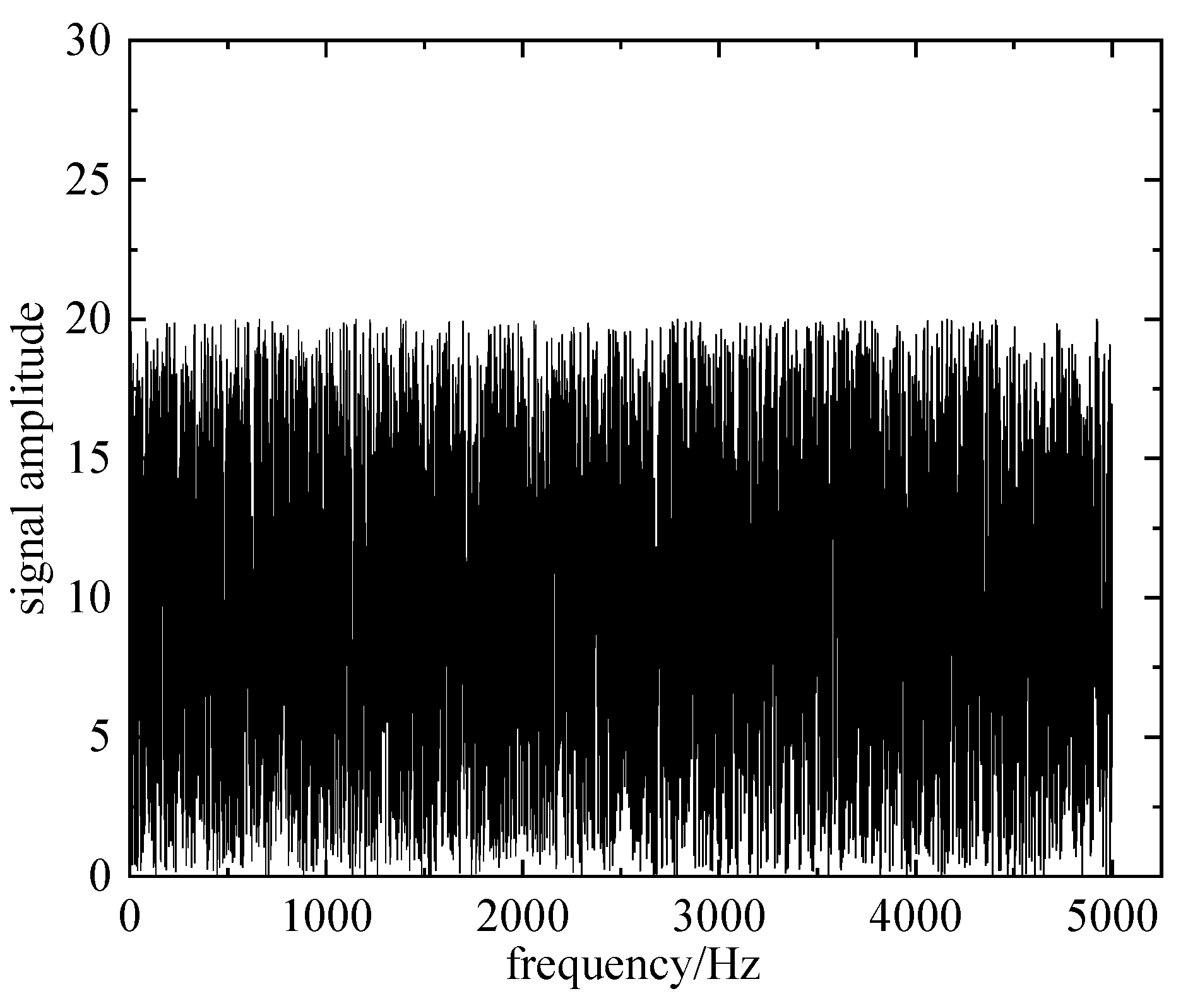

| Parameters | Value | Parameters | Value |
|---|---|---|---|
| Rated capacity/kVA | 28 | Rated frequency/Hz | 50 |
| Rated voltage/V | 380 | Stator resistance/Ω | 0.5 |
| Rated speed/(r·min−1) | 3500 | Stator leakage inductance/mH | 2.68 |
| Air gap/mm | 0.35 | Moment of inertia/(kg·m2) | 0.45 |
| Number of stator slots/piece | 36 | Torque/(N·m) | 55 |
| Sample Size | Fault Diagnosis Accuracy/% | ||||
|---|---|---|---|---|---|
| Convolutional Neural Network | EMD-SVM | SOM Neural Network | Random Forest Model | Proposed Method in This Paper | |
| 200 | 81.2 | 83.2 | 82.4 | 84.3 | 88.6 |
| 300 | 82.1 | 85.6 | 83.5 | 87.2 | 89.2 |
| 400 | 84.5 | 87.6 | 85.2 | 89.1 | 92.5 |
| 500 | 89.2 | 89.4 | 87.6 | 91.2 | 94.6 |
| 600 | 92.1 | 93.5 | 90.4 | 92.4 | 97.8 |
| Added Noise Interference/dB | Fault Diagnosis Accuracy/% | ||||
|---|---|---|---|---|---|
| Convolutional Neural Network | EMD-SVM | SOM Neural Network | Random Forest Model | Proposed Method in This Paper | |
| 5 | 92.1 | 93.5 | 90.4 | 92.4 | 97.8 |
| 10 | 90.1 | 91.3 | 89.2 | 91.5 | 95.6 |
| 15 | 89.4 | 89.3 | 87.6 | 90.3 | 93.4 |
| 20 | 86.2 | 85.1 | 85.2 | 88.7 | 91.5 |
| 25 | 83.1 | 84.7 | 82.6 | 85.3 | 90.0 |
| Unit Types | Fault Diagnosis Accuracy | |
|---|---|---|
| Stator Fault | Rotor Fault | |
| Four-Machine Unit | 96.6% | 98.5% |
| Three-Machine Unit | 95.6% | 97.3% |
| Reversible Unit | 97.2% | 97.6% |
| Coaxial Rotary Unit | 96.4% | 98.2% |
Disclaimer/Publisher’s Note: The statements, opinions and data contained in all publications are solely those of the individual author(s) and contributor(s) and not of MDPI and/or the editor(s). MDPI and/or the editor(s) disclaim responsibility for any injury to people or property resulting from any ideas, methods, instructions or products referred to in the content. |
© 2024 by the authors. Licensee MDPI, Basel, Switzerland. This article is an open access article distributed under the terms and conditions of the Creative Commons Attribution (CC BY) license (https://creativecommons.org/licenses/by/4.0/).
Share and Cite
Bai, J.; Liu, X.; Dou, B.; Yang, X.; Chen, B.; Zhang, Y.; Zhang, J.; Wang, Z.; Zou, H. A Fault Diagnosis Method for Pumped Storage Unit Stator Based on Improved STFT-SVDD Hybrid Algorithm. Processes 2024, 12, 2126. https://doi.org/10.3390/pr12102126
Bai J, Liu X, Dou B, Yang X, Chen B, Zhang Y, Zhang J, Wang Z, Zou H. A Fault Diagnosis Method for Pumped Storage Unit Stator Based on Improved STFT-SVDD Hybrid Algorithm. Processes. 2024; 12(10):2126. https://doi.org/10.3390/pr12102126
Chicago/Turabian StyleBai, Jie, Xuan Liu, Bingjie Dou, Xiaohui Yang, Bo Chen, Yaowen Zhang, Jiayu Zhang, Zhenzhong Wang, and Hongbo Zou. 2024. "A Fault Diagnosis Method for Pumped Storage Unit Stator Based on Improved STFT-SVDD Hybrid Algorithm" Processes 12, no. 10: 2126. https://doi.org/10.3390/pr12102126





